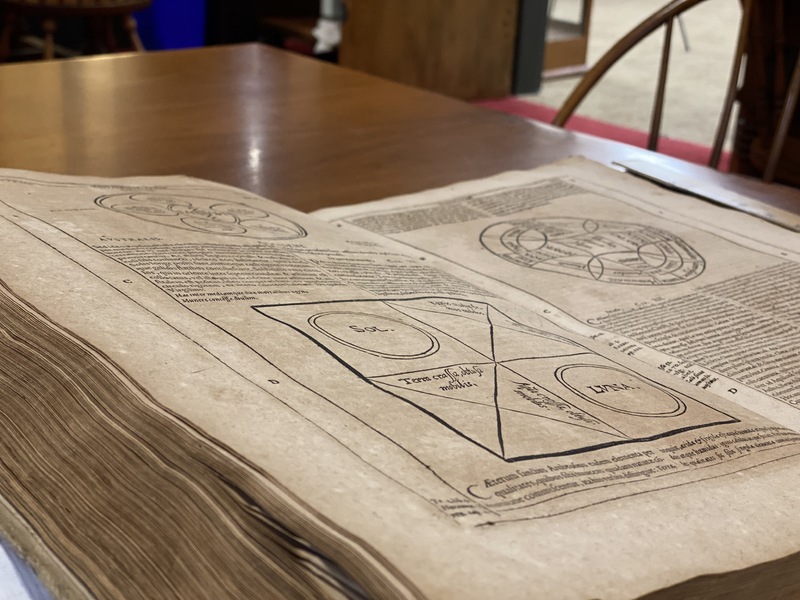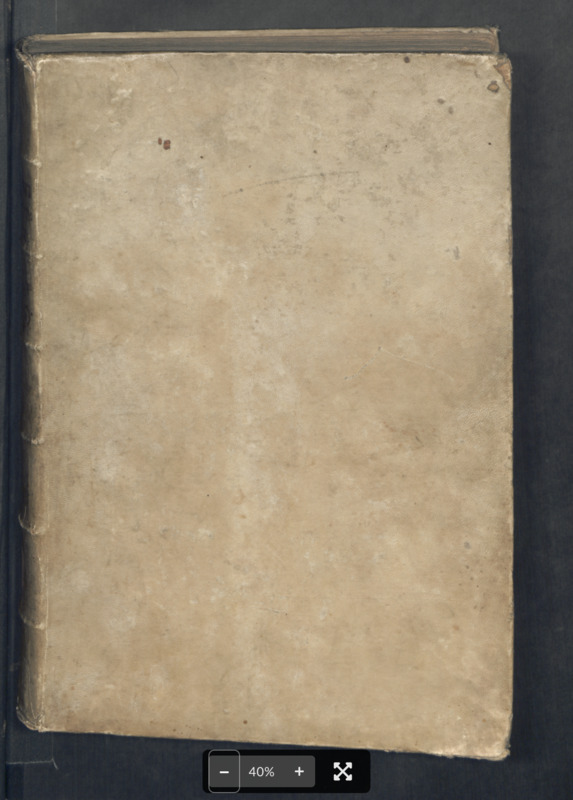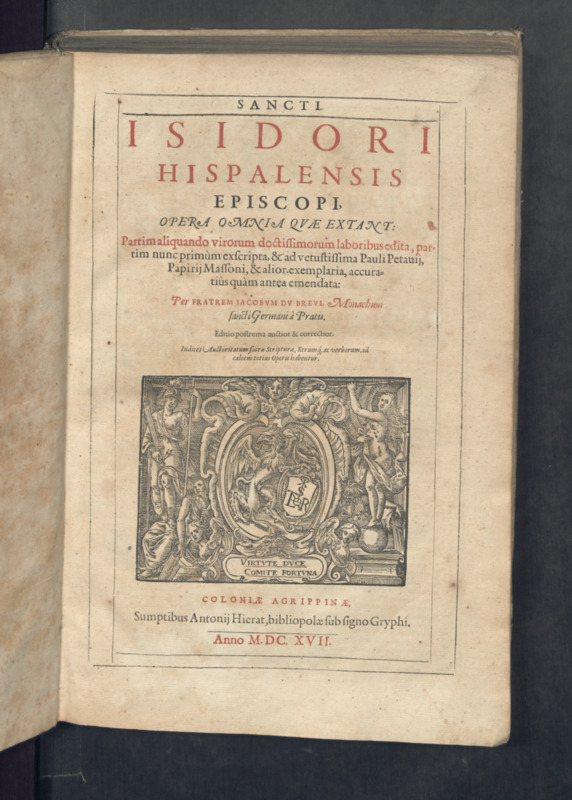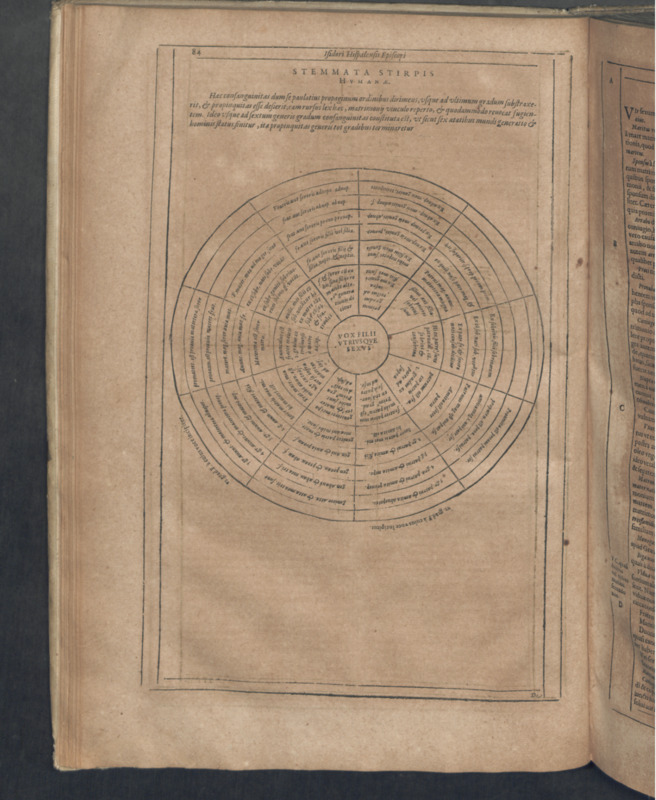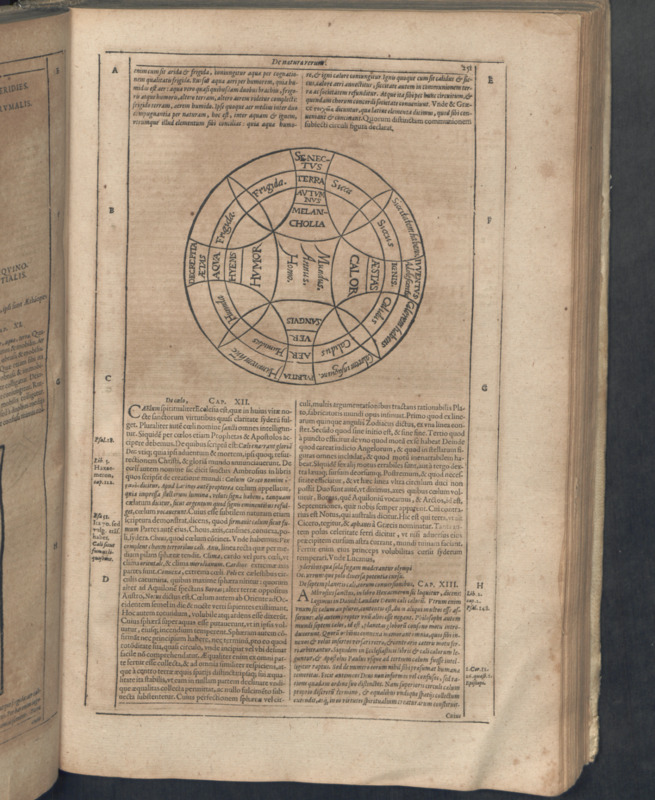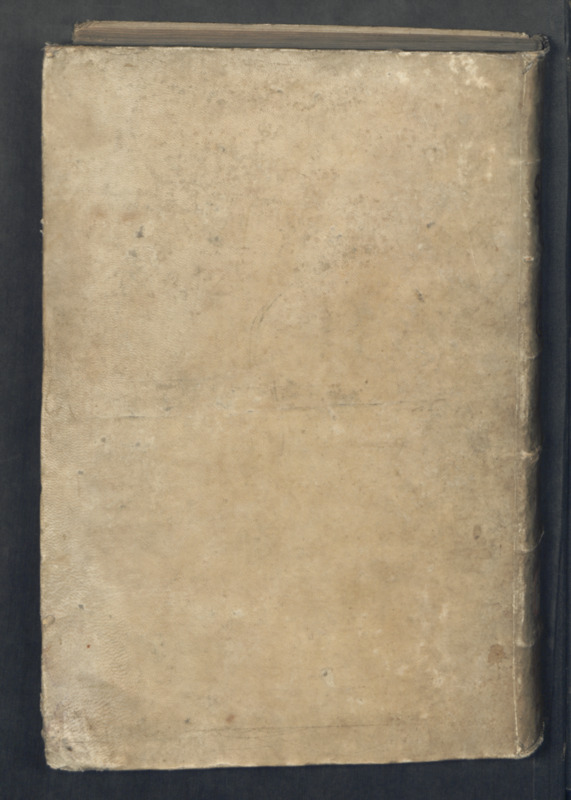Sancti Isidori Hispalensis Episcopi, Opera Omnia
Item
- Title
- Creator
- Contributor
- Date
- Description
- Publisher
- Type
- Extent
- Language
- Format
- Identifier
- Rights
- Subject
- Illustrative content information
- Secondary Features
- Genre/form
- translator
- Book format
- Publication Information
-
en
Sancti Isidori Hispalensis Episcopi, Opera Omnia
-
es
Sancti Isidori Hispalensis Episcopi, Opera Omnia
-
en
Isidore of Seville
-
es
Isidoro de Sevilla
-
en
Paul Pétau and Jean Papire Masson, editors (text based in the edition by Jacques du Breul)
-
es
Paul Pétau y Jean Papire Masson, editores
(texto basado en la edición de Jacques du Breul)
-
en
1617
-
es
1617
-
en
Imagine that you are holding in your hands a singular collection of knowledge of the ancient world. The complete works of Isidore of Seville (d. 636), compiled and edited by Jacques du Breul (1528-1614) and published in this edition by Paul Pétau and Jean Papire Masson in 1617, offers us an incomparable view into how the world was conceived 1400 years ago. Isidore, the bishop responsible for converting the visigoths to Christianity, compiled his erudition in a book that serves as a bastion of early medieval knowledge. Its wide pages show his charts, which address themes as different as the relationships between people (see fig. 1), the relative positions of the Earth, the sun, and the moon (see fig. 2), and the organization of emotions (see fig. 3). The expensive process of creating books during his time, his Latin writing and the knowledge necessary to understand his discussions implies the elite audience of the original text. This edition contains the twenty books of the etymology, together with sixteen additional works. The rigorous index added by the editors shows its role as a referential text for scholars doing research. Also, the smooth calfskin binding, the elaborate colophon in the inside cover, and the use of red and black ink with multiple different fonts indicates an educated and well-to-do audience. Additionally, its exclusivity ensured that only the scholarly community could access it. This edition is the final and corrected one, a limited series to begin with, and according to the World Catalog only twelve known copies exist today. For our copy, an indistinguishable word written In pencil near the final page perhaps suggests a previous owner. When creating their books, Isidore and du Breul had the same idea: “How would the people of the future advance without reference to the past?”
-
es
Imagine que estás agarrando en sus manos una colección singular de conocimiento del mundo anciano. Las obras completas de San Isidoro de Sevilla (m. 636), compiladas y editadas por Jacques du Breul (1528-1614) y publicaron en esta edición de Paul Pétau y Jean Papire Masson en 1617, nos ofrece un vistazo incomparable a cómo se concibía el mundo hace 1400 años. Isidoro, el obispo responsable por convertir a los visigodos al cristianismo, recopiló su erudición en un libro que sirve como bastión de conocimiento medieval temprano. Sus páginas amplias presentan sus gráficas, que tratan temas tan diferente como las relaciónes entre personas (véase fig. 1), las posiciones relativas de la tierra, el sol, y la luna (véase fig. 2), y la organización de emociones (véase fig. 3). El proceso caro de crear libros durante su época, su escritura en Latín y el conocimiento necesario para entender sus discusiones implica la audiencia élite del texto original. Ésta edición contiene los veinte libros de la etimología, junto con diez y seis obras adicionales. El índice rigoroso añadido por los editores demuestra su papel como un texto referencial para escolares haciendo recurso. También, la lisa encuardenación de cuero, el logotipo elaborado en la cubierta interior, y el uso de tinta roja y negra con multiples fuentes diferentes indica una audiencia educada y adinerada. Además, su exclusividad aseguró que solo la comunidad culta pudiera accederlo. Esta edición es lo final y corrigido del texto, una serie limitada para empezar, y según el católogo mundial solo doce copias conocidas existen hoy día. Para nuestra copia, una palabra indistinguible escrita en lápiz acerca de la página final quizás sugiera un dueño previo. Cuando crearon sus libros, Isidoro y du Breul tenían la misma idea: ¿como avanzaría la gente del futuro sin referencia al pasado?
-
en
Anton Hierat
-
es
Anton Hierat
-
en
Book
-
es
Libro
-
en
1500 pages
-
es
1500 páginas
-
en
Latin, Greek
-
es
Latín, Griego
-
en
10"x15"
-
es
10"x15"
-
en
Call Number: BR65 .I7 1617
Rare Folio
-
es
Numero de Llamar: BR65 .I7 1617
Folio Raro
-
en
This material is made available for use in research, teaching, and private study, pursuant to U.S. Copyright law. The user assumes full responsibility for any use of the materials, including but not limited to, infringement of copyright and publication rights of reproduced materials. Any materials used should be fully credited with the source. Permission for publication of this material, in part or in full, must be secured with the Head of Special Collections.
-
es
Este material se ha hecho disponible para uso en investigaciones, tanto académicas como privadas, y en la docencia, de conformidad con la ley de derechos de autor de EE. UU. El usuario asume toda la responsabilidad por cualquier uso de los materiales, incluida, entre otras, la infracción de los derechos de autor y los derechos de publicación de los materiales reproducidos. La fuente de cualquier material utilizado debe acreditarse claramente. El permiso para la publicación de este material, en parte o en su totalidad, debe obtenerse de el/la/le Jefe de las Colecciones Especiales de WLU.
-
en
Isidore of Seville (560-636)
Early Medieval Literature
Iberian Peninsula
Visigothic Literature
Medieval Latin
-
es
Isidoro de Sevilla (560-636)
Literatura medieval temprana
Península ibérica
Literatura visigoda
Latín medieval
-
en
T-O map and various astronomical and scientific charts in black and white throughout the text.
-
es
Una mapa “T-O”, y varios gráficos, astronómicos y científicos, en negro y blanca a través del texto.
-
en
An old W&L library stamp
An indistinguishable word in Spanish or Portuguese written in pencil (inside cover)
-
es
Una estampa vieja de la biblioteca de W&L
Una palabra indistinguible en español o portugués escrita en lápiz (cubierta interior)
-
en
Encyclopedia
-
es
Enciclopedia
-
en
No translator
-
es
No hay traductor
-
en
Hardback
-
es
Tapa dura
-
en
Place of Publishing: Cologne, Germany
-
es
Lugar de publicación: Cologne, Germany
